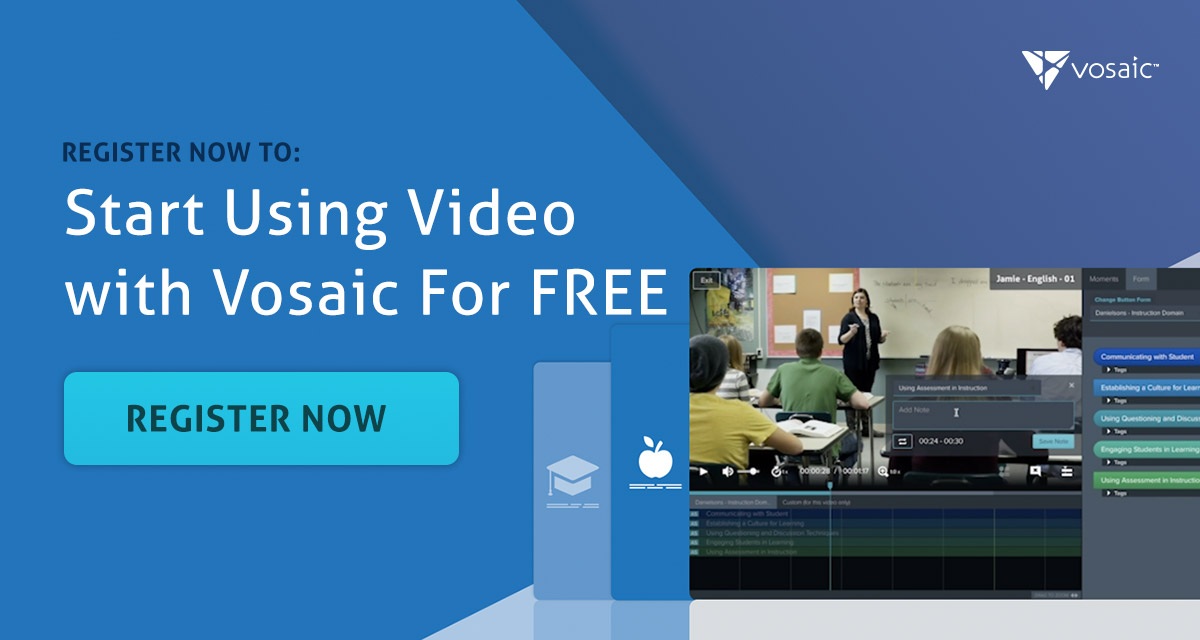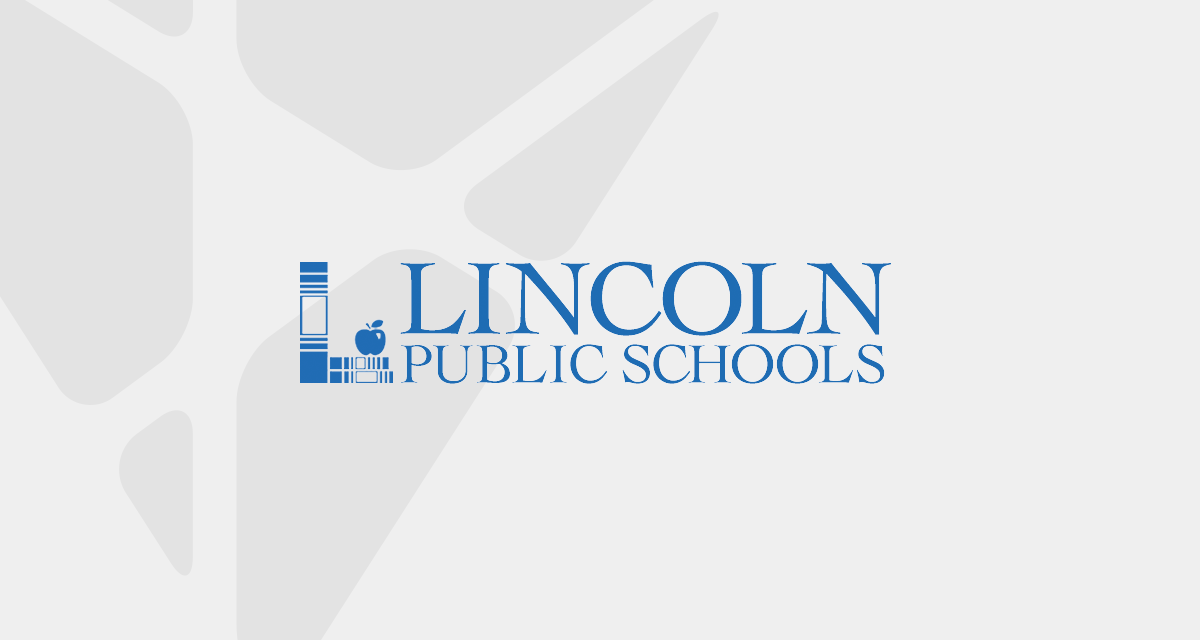Educators understand that the degree to which students learn and retain material correlates with the level of engagement in the classroom. The higher the level of engagement in the classroom, the higher the level of learning. Instructional coaches can play a pivotal role in helping teachers increase the engagement levels of their classrooms. Coaches should observe and measure levels of engagement and offer meaningful suggestions for improvement.
Stay on Top of Important Discoveries
We read case studies and academic journals so you don’t have to. Sign up and we’ll send you the key takeaways.
Measuring classroom engagement
If you don't have a Vosaic account for teacher coaching with video, you can start with a free trial today.
As an instructional coach, you should be able to assess teachers' current levels of performance before trying to help them improve. You should also be familiar with their strengths and weaknesses in all aspects of teaching, including how well they keep their students engaged. Not only is it essential to assess teachers on these skills, but it's also vital to communicate ways in which they can improve.
Phil Schlechty, a leader in education, is well known for his efforts to fight the challenges of education. In doing so, he defined five different levels of student engagement in his Engaging Students Book (2002). These levels have helped teachers increase engagement for particular individuals and groups. Every student can be siloed into at least one of these categories, with most students belonging in more than one.
The five levels of student engagement are:
- Authentic Engagement - Student is consumed and very interested in the work given to them, because he/she finds value, meaning, and personal interest in the topic.
- Strategic Compliance - Student finds no meaning or value in the lesson presented to them but is motivated by an external reason to pay attention and participate, such as grades and high GPA.
- Ritual Compliance - Student sees no importance or value in the topic being presented but participates to avoid negative consequences that may come from not being engaged, such as staying after to finish homework.
- Retreatism - Student is disinterested in the lesson and makes no effort to pay attention, but is not distracting or disturbing classmates.
- Rebellion - Student refuses to do any work or pay attention, distracts the rest of the class, and seeks to do other activities.
Categorizing the engagement levels of both individual students and classrooms as a whole can help guide instructional coaching methods. For the sake of labeling overall classroom engagement, Schlechty provides these three categories:
- Engaged Classroom - Students are interested, participating, and engaged most of the time, and the degree to which they are engaged is relatively high. There is little strategic compliance and retreatism, and no rebellion.
- Compliant Classroom - Students are evenly distributed between those who are interested and disinterested. Retreatism is very much present, but there’s little to no rebellion.
- Off-Task Classroom - Students are all on their own as far as learning, and there are aspects of every level in this category of engagement. Retreatism and rebellion are very evident in some students, and most of the teacher's time is spent assisting the disengaged students.
These categories can help inform teachers what presence of engagement they currently have in their classrooms, and what strategies can be implemented to solve existing problems. Of course, there's no shortage of tips and tricks for boosting student participation. Fortunately, we were able to find some common suggestions for increasing classroom engagement, which we’ve compiled here.
Build meaningful teacher/student relationships
Educators should strive for a constant awareness of student learning and participation to gauge and increase engagement. One recommended method is for teachers to take an interest in their students outside of the classroom. Remembering their names, building relationships, and asking questions about their hobbies shows students that they are valued as people and not just pupils.
By better understanding what they enjoy and what they're interested in, teachers can sculpt lessons to feel more intriguing and relevant to their students. Classroom examples will keep students' attention and increase participation if they include familiar subjects like celebrities, sports, pop culture references, etc.
Not only does getting to know your students help promote comfortability and trust in the teacher-student relationship, but it also encourages students to participate and engage in active learning in a positive, welcome environment. “When teachers address and meet students’ needs to be valued and respected, their attachment to school and its activities increases” (Chang 2012).

Introduce technology to the classroom
To keep students interested, teachers should avoid static lesson plans. By switching up how material is delivered, an element of surprise is introduced in the classroom. Luckily, there's an endless array of technology available to make lesson plans feel new and exciting.
There are many different ways to use technology in lesson plans, but a few recommended ways are videos, games, virtual tours, and simulations. Short videos, relevant to the topic at hand, can supply students with a break from note-taking and help them better apply the subject to other situations. Games can be a great resource when reviewing for upcoming tests or quizzes, and the use of virtual tours or simulations can better illustrate a lesson.
The more ways to communicate a topic to students, the more potential there is for retention. Therefore, by adding an element of technology into teaching, you can reinforce past points and keep students engaged.
Present complicated lessons as stories
The use of stories in the classroom can be an effective way to link various points into one singular narrative. These narratives make it easier for students to remember, understand, and apply the content. When used appropriately, stories can engage students and make lessons more intriguing and relatable.
This method of engagement allows for a lot of creative liberty. Teachers can vary widely in both the content and delivery of stories told in the classroom. One particularly successful practice in storytelling is the stimulation of emotion. For inspiration, teachers can lean on personal experiences, historical events, past students' success, or creative analogies. It also helps to give students the chance to tell their own stories to interact more closely with the information at hand.
Schank and Ableson point out that stories (and how we present them) are the primary sources of knowledge in human development. This research supports that stories help everyone understand and retain information not only in our working memory, but in our long-term memory as well. Stories that link together multiple chunks of data take up less space in the brain and create links that remain much longer.
Assign projects and group activities
Offering students the opportunity to work on projects or in groups can be a different and more effective way to help them learn. By allowing students to choose a topic of interest to them, they are more likely to participate and stay engaged with the issue at hand.
Projects allow students the chance to apply things learned in class to unique situations, and develop skills that are not used in routine classwork. Projects provide the opportunity to strengthen presentation skills, critical thinking, and the ability to collaborate.
“[P]eers may contribute to students’ academic engagement by establishing an atmosphere of belongingness and promoting relationships with classmates and teachers in class” (Woolley, Kol & Bowen, 2009). Not to mention by offering group activities, you give students the ability to teach each other through communication and sharing of ideas.
Projects and group activities also give students a break from lectures and note-taking and provide the chance to learn information in a new way. They supply students with a sense of purpose if the topics relate to real-world problems or challenges.

Practice makes perfect
Another significant part of teaching involves training and improving presentation skills and performance. Although it’s not typically thought of as performance art, it may help to think of education as a show that is performed every day. Like all shows, teaching practices should be engaging and intriguing.
As a coach or administrator, it's crucial to study teacher performance and give feedback on new ways to captivate students. Studies on pedagogy aspects such as teaching evaluations and learning outcomes suggest the importance of immediacy cues. Immediacy cues are nonverbal behaviors such as eye contact, hand gestures, room movement, and voice tone. Students examine these things and subconsciously decide whether or not their teacher is engaging.
Though teachers can build the engagement methods mentioned above into their lessons, immediacy cues aren't as black and white. The best way for teachers to improve their nonverbals is by practicing mindfulness and self-reflection.
Video, the best method for engagement measurement
Before encouraging teachers to implement the practices mentioned above, instructional coaches should observe and measure initial levels of classroom engagement. This preliminary action provides a benchmark to determine how well new methods affect learning at the individual and classroom level.
However, the process of observing and measuring classroom engagement can require time and resources that instructional coaches and administrators don't always have. Even when coaches and administrators make in-class observations happen, it can be challenging to observe every single aspect of the classroom. When trying to provide feedback based solely on memory and incomplete notes, the process can be subjective and biased.
"If used well, video technology can help overcome these barriers and accelerate the process of opening up instruction to observation and feedback," said Havard University after a study for their Best Foot Forward Project.
Video is a promising resource for instructional coaches, teachers, and administrators in their efforts to increase professional development in schools. Unlike in-class evaluations, video provides concrete evidence of teachers' practices that can be reviewed multiple times if needed. It then becomes easier for instructional coaches to walk teachers back through their lessons and diagnose levels of classroom engagement. Through the use of video, coaches can show teachers key indicators to look for when gauging engagement.

Vosaic as a resource for feedback and self-reflection
Though video alone is an excellent start for measuring and improving engagement, platforms like Vosaic can streamline the process. Vosaic is a cloud-based video platform that allows users to record, upload, annotate, and share videos. Vosaic is highly flexible and customizable to the needs of individual teachers and schools. That’s why instructional coaches and administrators across the country are already using Vosaic to help teachers create more engaging classrooms. If you’d like to help your teachers improve classroom engagement, schedule a short demo with us to see how using video with Vosaic can help.

Stay on Top of Important Discoveries
We read case studies and academic journals so you don’t have to. Sign up and we’ll send you the key takeaways.



